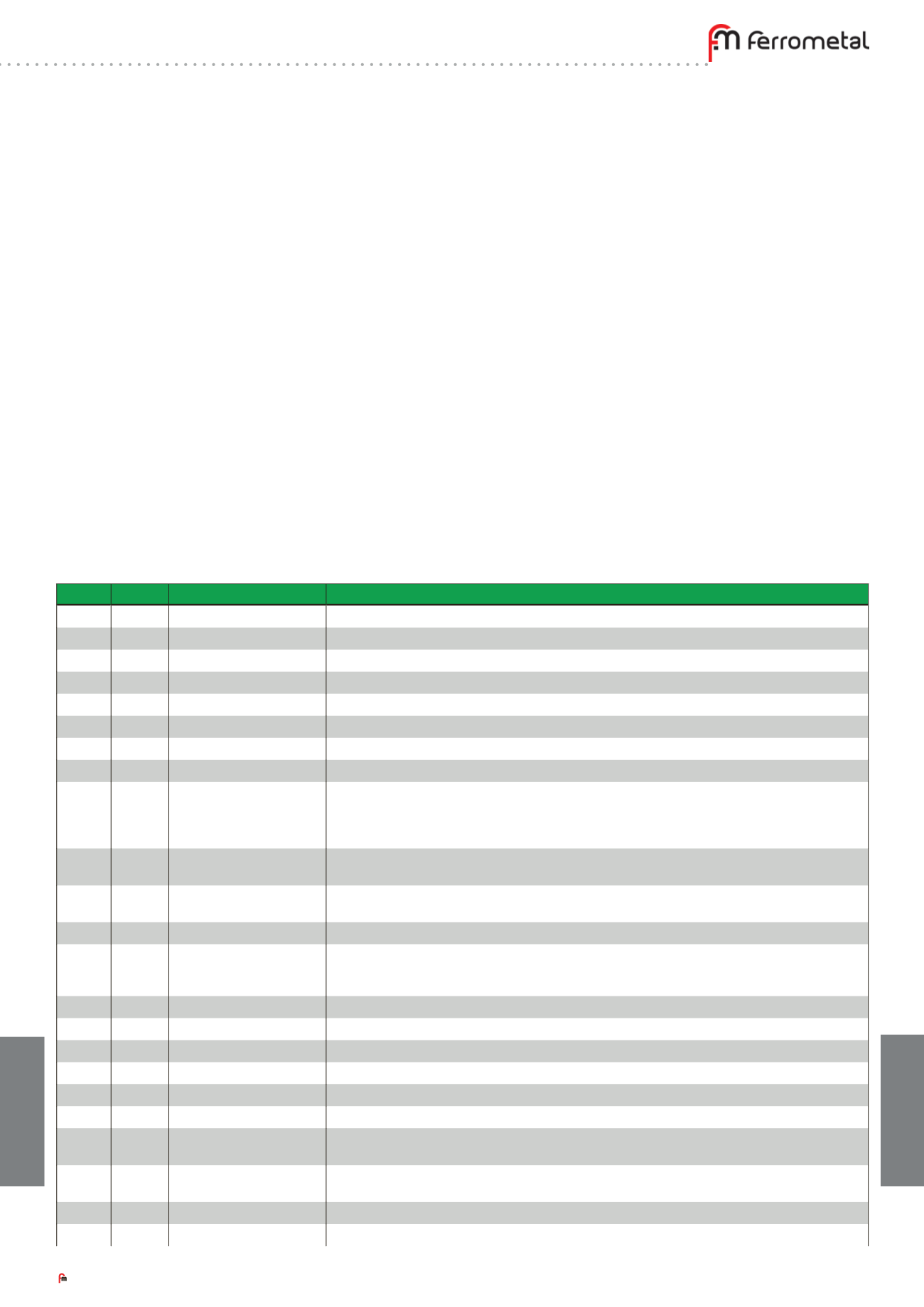

© Ferrometal 08/2015
7.65
Kysy saatavuus /
Ask for availability
Suomi +358- 10 308 11 Latvia & Lithuania +371- 672 80 581
Eesti +372- 6990 470
www.ferrometal.fi1. Standards
DIN
German national standard (Deutsches Institut für Normung). DIN-numbers are still valid for products which do not have ISO- or EN-standard.
ISO
International standard (International Standardization Organisation). Many DIN-standard have formed basis for ISO-standards.
DIN ISO
German national version of ISO-standard where to many ISO-numbers have been taken unchanged.
EN
Euroapean standard (CEN = Comité Européen de Normalisation). Valid ISO-standards have been taken to use unchanged in EN-standards as far
as possible. If EN-standard differs from ISO-standard, product specification is done according to EN-standard.
DIN EN
German national version of EN-standard unchanged. According to Euroapean Council’s decision, member countries of Euroapean Union take EN-
standards into use unchanged. Corresponding national standards are cancelled simultaneously. If EN-standard differs from ISO-standard, product
specification is done according to EN-standard.
EN ISO
Euroapean version of ISO-standard unchanged. EN- and ISO-numbers are identical, former procedure “ISO-number + 20 000” have not been
valid since 1/95. In exception are the standards that are in the conversation procedure. Product specification is done according to ISO-standard.
DIN EN ISO
German national version of EN ISO-standard unchanged.. Product specification is done according to ISO-standard.
SFS
Finnish national standard. Applying of International and Euroapean standards as shown above.
The aim of standardization is to reduce technical and commercial differences in products, define and unify right concepts and ways of expressions and to find right products
and procedures for both parties. Standardization leads to easier global trade and increase of safety and wellfare.
In fasteners business the most commonly used in standards areDIN- and ISO-standards. DIN- and ISO-standards differences in product dimensions:
DIN ISO Item
Differences
1
2339 Taper pin
Usually replaceable. Lenght in DIN-standard do not include pin´s ends.
7
2338 Parallel pin
Usually replaceable. Lenght in DIN-standard do not include pin´s ends.
84
1207 Slotted cheese head screw Differences in head dimensions
85
1580
Differences in head dimensions
94
1234 Splint pin
-
125
7089 Washer
Nominal dimensions based on thread diameter (ISO) , or on hole diameter (DIN). No dimensional differences
126
7090 Washer
Nominal dimensions based on thread diameter (ISO) , or on hole diameter (DIN). No dimensional differences
127
-
Spring washer
-
314
315
316
318
-
Wing nut
-
417
7435 Slotted grub screw with full
dog point
Usually replaceable
427
2342 slotted headless screw with
chamfered end
Usually replaceable
433
7092 Washer
-
434
435
436
-
Square washer
-
438
7436 Countersank head rivet
No dimensional differences
439
7435 Hexagon nut
Usually replaceable
440
7094 Spring washer
No dimensional differences
444
-
Eye bolt
-
471
-
Retaining bolt
-
472
-
Retaining ring for bore
-
551
4766 Slotted grub screw with flat
point
No dimensional differences
553
7434 Slotted set screw with cone
point
No dimensional differences
555
4034 Hexagon nut
Differences in width across flats and in height of the nut.
Look DIN-ISO detailed comparison.
558
4018 Hexagon screw
No dimensional differences













